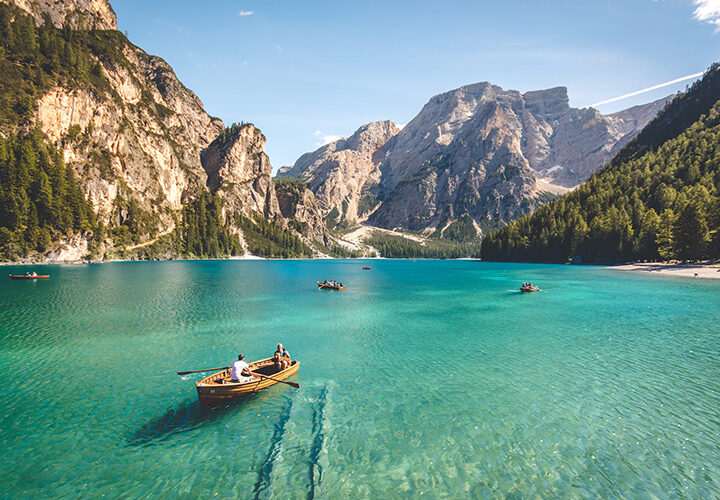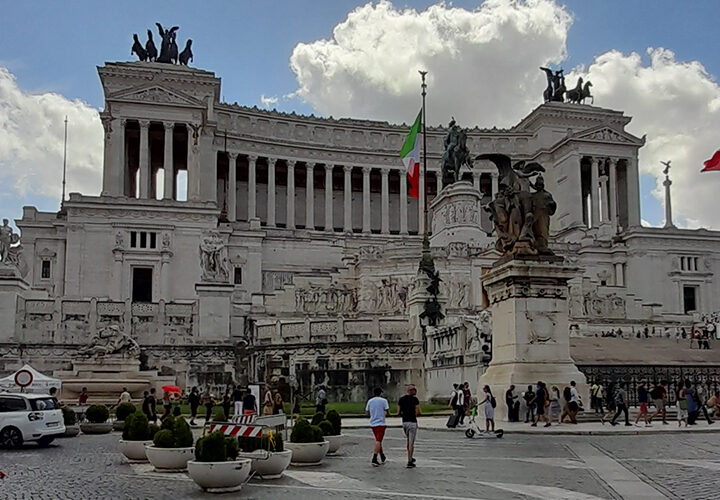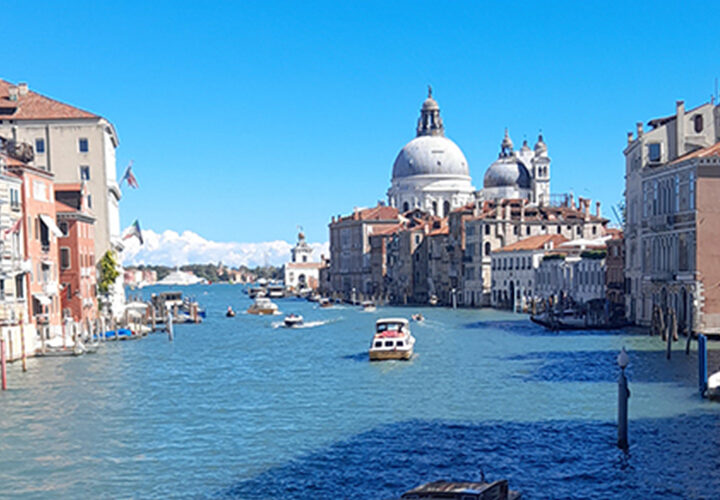Exploring Italy part three: The Amalfi Coast
For the final stretch of our holiday, we left Rome and headed south to the stunning and historic Amalfi Coast. A land of history, culture and breathtaking views, this often-forgotten part of southern Italy is the perfect place to unwind by the beach, especially after a packed few days exploring Rome. The Amalfi coast is perhaps most famous for Pompeii; the ancient town that in 79 AD was destroyed by the eruption of Mount Vesuvius; and Naples, the bustling and vibrant city that has risen from the ashes of this destruction to become one of the most exciting cities in modern Europe. But while these are popular attractions here, and it’s undeniable Mount Vesuvius dominates the skyline of the Bay of Naples, there’s so much more this region has to offer that isn’t as universally known. From ancient sites to stunning coastline, beautiful beaches, and breathtaking mountain walks, there’s something for everyone in this beautiful haven in Italy.
We travelled to the Amalfi Coast by getting the train from Rome to Naples. However you plan to come to this region, it will inevitably be through Naples. With a major train station and international airport, Naples is the biggest settlement in the region and the only feasible way to travel here by train or plane. From Naples, we then got a train to Castellammare di Stabia, the town we were staying in.
Travel tip 1: There is only on train line in the Amalfi Coast, and this is the Naples – Sorrento line. It covers many popular sites such as Naples, various Napoli suburbs, Herculaneum, Pompeii, Castellammare di Stabia (which is a popular port for ferries) and Sorrento. However, it doesn’t cover many other popular Amalfi Coast destinations such as Positano, Amalfi or Ravello. These regions can be accessed by either bus or ferry, so if you’re using public transport keep this in mind both when choosing a base to stay at, and places to visit whilst you’re there.
Travel tip 2: The roads in the Amalfi Coast, while scenic, are small and winding, which can be challenging for less confident drivers or drivers of bigger vehicles, and in addition parking is often very limited in popular attractions. Therefore I’d advise, where possible, to use public transport.
Worth noting: definitions of the ‘Amalfi coast’ vary, with lots of people believing the Amalfi coast is only the southern side of the peninsula, where the town of Amalfi is located. However, for ease, and to broaden the places I can mention in this vlog, I’ll refer to the Amalfi Coast as everything between Naples and Salerno, as many popular tourist attractions you might want to visit (such as Pompeii, Naples or Ischia) fall into this area but not some of the narrower definitions of the ‘Amalfi Coast’.
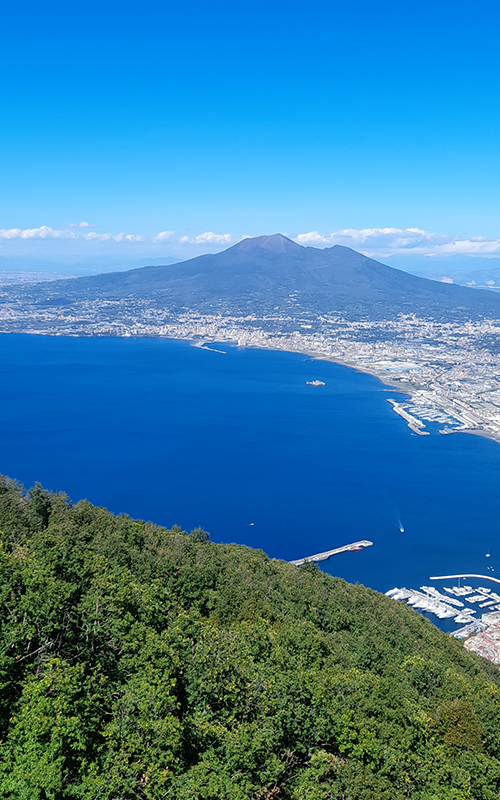
Why the Amalfi Coast?
Italy is a country with loads of coastline; even more if you count it’s many islands; so why did we choose the Amalfi coast to be our coastal stop on the Italy trip? The Amalfi coast has a blend of history, culture, stunning architecture, gorgeous mountains as well as, of course, lovely beaches. And it’s a lot more accessible for travelers like us, who are using exclusively public transport, than other regions of Italy’s coastline. But above all the density of activities and sights around this region make it worth visiting, regardless of what you like doing. Here’s my list of the top ten best things to do and see in this area:
Top ten best things to see and do in the Amalfi Coast.
- Naples. This vibrant city is one of the biggest and most popular in Italy, and it offers plenty for visitors to enjoy. You could wander through the narrow streets of the city centre, a UNESCO world heritage site. If culture is more your thing, you can explore the National Archeological Museum of Naples, which has lots of artifacts from Pompeii, Naples and various other ancient communities in the region. Or you could explore the Capodimonte museum or the Naples Cathedral Museum, both of which have extensive collections of Renaissance and Baroque art, as well as many other religious artifacts. There’s also the Castel Nuevo, an imposing medieval castle in the middle of town. And at the end of all that, you can relax on the beach or promenade in the evening. There’s loads to do in Naples, and this could easily be a holiday in itself, or serve as a base for the Amalfi coast, especially if you’re on a budget. Naples has great ferry connections all around the coast and beyond, so it would be a great pick for a base, but just bear in mind it is quite far from a lot of the main attractions, so I personally would recommend staying elsewhere and day tripping here once or twice if any of these things interest you.
- Pompeii. The famous ancient town that was destroyed by ash and pyroclastic flow from the eruption of Mount Vesuvius in 79 AD. Now an archeological site, Pompeii is remarkably preserved, and you can walk around the ancient ruins, and even look inside ancient houses, temples and brothels that once served this trading community. Tickets can be bought on site or online in advance for cheaper (in most cases) and you have the option of a guided tour for a further fee that will show you around the town, and explain what the buildings were, what purpose they served and how the people of Ancient Roman Pompeii lived. There is a train station right outside the ticket booth which connects it to the Naples to Sorrento line.
- Herculaneum. Also an ancient town destroyed by the eruption of Mount Vesuvius, Herculaneum is slightly closer to Naples, and considered to be in a much more preserved state. Although it doesn’t have so much of a legendary status as its more famous brother, Herculaneum has very well-preserved buildings, so gives a much better insight into Roman life. Many people give it a miss as they don’t see the need to go to two similar archeological sites (especially when there’s so much to do here) and decide to go to Pompeii out of the two because its more famous, but there’s a lot to be gained by going to both. Both are beautiful, fascinating and give very different insights into Roman life, so if you’re interested in this be sure not to miss either.
- Mount Vesuvius. Mount Vesuvius is the volcano that dominates the skyline in the Bay of Naples, and who’s eruption in 79 AD destroyed Pompeii, Herculaneum and many other settlements in the bay area. It is currently classified as dormant, which means it’s unlikely to erupt in the future and is safe to climb up. There are various hiking routes up to the top, some of which can be partially accessed by car (although not to the very top). Hike up here for unrivaled views of the bay and the Mediterranean, as well as to look in the famous crater at the top.
- Capri is an island in the Bay of Naples, and offers stunning views and culture. With beautiful white buildings, incredible coastline and a mild climate, Capri is a must visit when in this region and has been one of Italy’s most popular tourist destinations for years. With small quaint cafes to huge imposing cliffs, Capri is breathtaking even for Italian standards. You can stay in Capri, or alternatively there are a range of boat tours and ferries that go here all throughout the day from many locations including Naples, Sorrento, Castellammare di Stabia, Positano, Amalfi and many others, and these typically take between 30 minutes and 1 hour.
- Ischia. If islands are your thing but you’re worried about the crowds or expenses of Capri, why not try Ischia? This island isn’t as famous as its neighbour, but it’s equally beautiful with imposing castles, beautiful towns, stunning cliffs and beautiful beaches all available here in abundance. Ischia is often described as more laid back than Capri, as it has less crowds and is bigger, so come here if you want a relaxing break. The only downside is it has fewer connections to the mainland, with the main ports offering trips here being Naples and Sorrento, so bear this in mind if you’re not planning to stay in those places.
- The Path of the Gods. This is a scenic path that starts in Bomerano, Agerola, and finishes in Nocelle, Positano. It is a cliff path that offers stunning views of the sea and the imposing cliffs both above and below you. Considered one of the most scenic walks in Europe, this breathtaking hike is definitely one to consider for a sunny day, if you’re feeling active! It is approximately 4.8 miles long, and takes about 3 to 4 hours to complete from start to finish, depending on your pace. However the whole path is beautiful, so there’s no pressure to do it all- just do as much as you’re comfortable with, and you’re sure to see some incredible sights. It’s considered a moderate climb with some ascents and descents, so ensure you wear appropriate footwear, and note that it isn’t wheelchair friendly.
- Amalfi. The crowning jewel of the Amalfi Coast, Amalfi is a quaint fishing village with a rich history. It used to be the head of a powerful maritime republic during the middle-ages, and annually still takes part in the Regatta of the Ancient Maritime republics: a regatta held between Italy’s four most significant maritime republics- Venice, Genoa, Pisa and Amalfi. It is held annually in June or July in one of these old republics, on rotations, so you might even see it during your visit! In modern times it’s just a beautiful relaxing town with stunning views, a beautiful church and incredible architecture. If you want something to do between lounging on the beach and sipping limoncello in medieval piazzas, there is also a paper museum here, which tells of Amalfi’s rich history in the paper making industry, and shows how some of these exquisite papers are made.
- Hiking/ driving. The Amalfi Coast is, without a doubt, one of Italy’s most scenic regions. And what better way to take this in than by hiking, or driving on the twisting roads. If you’ve hired a car, you might enjoy driving around the coast, as these twisting roads offer stunning cliffside views, as well as snaking through some of the coast’s most beautiful villages. Just remember it’s a busy, small and challenging road, so keep your eyes on the road as well as the phenomenal scenery! If, like us, you haven’t hired a car, you can experience this in the coast’s many hiking trails. The most famous of which, the Path of the Gods, has already been mentioned, but there are many others to try. These include Monte Faito in Castellammare di Stabia; The Path of the Three Churches which connects Ravello, Scala, and Amalfi; and The Valley of the Mills- this picturesque hike starts in Amalfi and takes you through the Valley of the Mills, passing by ancient watermills and lush vegetation. This region is rich with hills, trails and lush vegetation, so if worth getting a hiking map, finding a route that matches your ability and setting off!
- Beach day. Although there is so much to do in the Amalfi Coast, and if like us you’re doing this as part of a trip around Italy your time may be short, I cannot advise a beach day enough. It gives you the opportunity to relax and unwind by the beach, either just enjoying the sun or enjoying a swim. You can also explore what the town you’re based in has to offer, especially if it’s not one of the major tourist hotspot, like Castellammare. All of the towns and villages have loads to offer here, and we were amazed by how much Castellammare had to offer. Wherever you’re staying, it’s worth taking it easy for the day and seeing what your town has to offer.
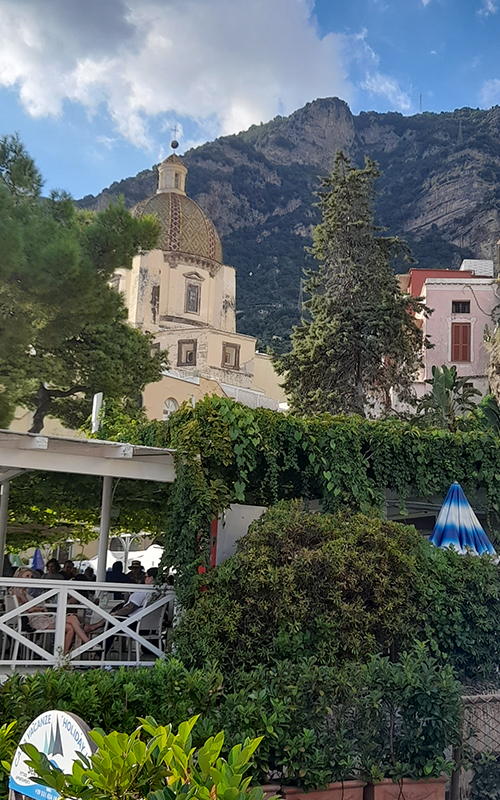
Choosing where to stay.
With a region as big as the Amalfi coast, choosing where to stay is very important. There are lots of things you can consider, including price, transport connections to other attractions, busyness, and of course the overall look and feel of the town. We chose Castellammare, a town in the Bay of Naples that has great connections and a lovely feel. You can get the train to popular tourist attractions such as Naples, Herculaneum, Pompeii and Sorrento, and ferries to Capri, Positano and Amalfi, as well as buses around the coast. Not only did the fact it was cheaper help our budget, but it also meant it was a lot less busy and felt more authentic. I loved feeling like we were in a proper Italian town that served locals, instead of just a holiday town that was primarily aimed at tourists.
Within Castellammare, there’s lots to do. There’s a great historic town centre, lovely promenade and beach, as well as the archeological ruins of the town that stood thee pre-79 AD when Mount Vesuvius erupted. I especially loved the cable car with goes to the top of Mount Faito, which gave stunning views over the mountains, the town and the bay as we went up. At the top, there is an inviting pub and various woodland trails, which give amazing views in a beautiful atmosphere.
Overall, choosing where to stay can make or break a holiday here. When you first start planning your time here, you’ll probably be tempted by places like Positano, Amalfi and Sorrento, and while these are undeniably amazing places, I definitely recommend shopping around to see what the other towns offer, as you might find something that suits your travel plans better for a much cheaper price-f although this is all personal choice, for some people staying in towns like Amalfi or Positano is a must, and makes their holidays great!
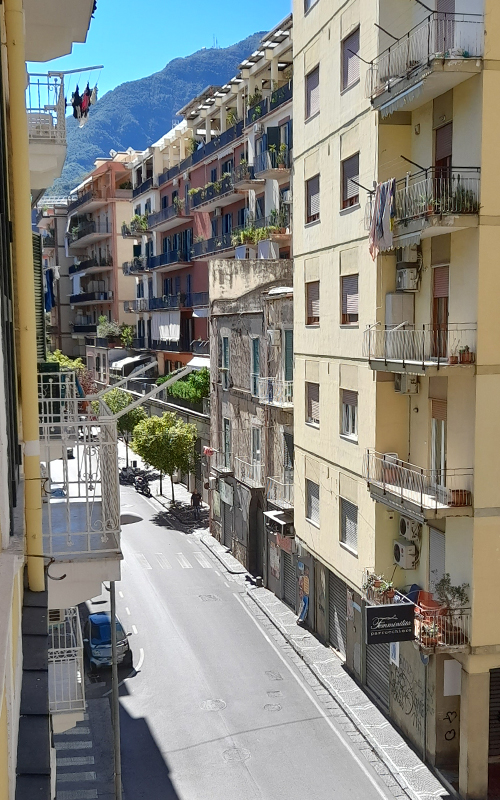
Boat tours.
One way of making the most of your money, and getting to see as much of the Amalfi Coast as possible, is to try a boat tour. These routes differ depending on the area and where you’re staying, but they usually involve two or three stops. Some of these are just drop off/pick up stops, which is to say you’ll need a separate ticket for your return, but others are excursions, meaning they’ll drop you off somewhere, and after a certain amount of time the same boat will return to pick you up and take you to the next place, all from the same ticket. We went on a boat tour to Capri and Positano, with an optional drop off in Sorrento. When we were dropped off in Capri, we were given four hours to explore. Unlike many tours you’ll see online, these aren’t guided or group tours, meaning you won’t get told what to do, where to go, and to always stay with the group. All you pay for is the boat over; what you do with the rest of the day is up to you. After getting a minibus to Anacapri, Capri’s biggest town, we had lunch and began exploring the town and enjoying the cliff views. After four hours here, the boat picked us up from the same place and took us to Positano, where we had about an hour to explore, and marvel at the lemon-themed ceramics that make this town so unique. After this we went home, enjoying the azure sea and stunning cliffs from the boat. This is a very cost-effective way of seeing the coast, as you can visit a few places with one ticket instead of just buying direct ferries to each of these places, especially if you want to spend longer in certain places than others.
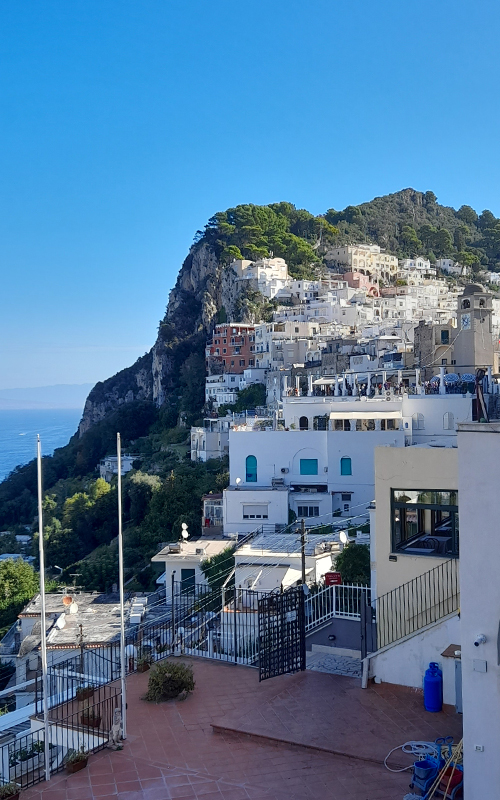
Safety considerations in the Amalfi Coast.
Although this is one of the most popular and safest regions of Italy, there are a few things to keep in mind while here. Here’s a checklist to take with you:
- Drive safely. The roads around this region are stunning, but dangerous. They’re often very thin and twisty, so be mindful of passing traffic and sharp corners. It might be best to consider what kind of car you’re hiring/bringing with you if you plan to drive- many bigger cars or campervans are simply not suitable for these roads. Also be mindful of pedestrians- the roads often form part of or run adjacent to hiking trails, so be aware of pedestrians in the road or crossing the road.
- This especially applies in popular tourist areas such as Amalfi, Positano or Naples, but can apply anywhere. Also be aware of pickpockets, and ensure valuables are kept out of view and in a sealed bag on your person. Be aware of people trying to distract you, such as by making conversation with you or spilling a drink on you, while their accomplice pickpockets you.
- Watch your step. There are many beautiful hikes in the Amalfi Coast, but many of them or on or at the tops of cliffs. They often have thin, uneven paths with steep drops, so be very careful and watch your footing. Be extra careful if you’re unsteady on your feet (especially older people) or are bringing young children who like to run around and play. Take extra care in wet weather as the terrain may be slippy, and always wear appropriate footwear.
- Hat, glasses, cream and water. The Amalfi Coast gets the best of the Mediterranean weather, but always be careful in the sun especially for long periods of time. Remember your hat, (sun)glasses, (sun)cream and water at all times, especially if you’re planning on being on the beach a lot during the day. If you’re not used to this climate, pace yourself, especially if you’re wanting to go hiking. And whatever you choose to do, remember your hat, glasses, cream and water.
- Being safe at sea. Most people who visit the Amalfi Coast will be tempted in to the azure waters at some point, and while this is definitely recommended, always be safe at sea. Pick lifeguarded beaches, if you can, and always swim within the designated areas. Be aware of underwater hazards, such as rocks and currents. Currents can be unexpected and strong, and although the waters around here are considered safe to swim in, it’s always worth keeping it in mind. Ensure you have told someone what you plan to do, and where you plan to go.
- Going out at night. Many towns in those area, especially Naples, have a vibrant nightlife. If you’re going out, always stay with your friends and don’t leave anyone alone. Don’t leave your drink unattended, and always keep an eye on it to avoid spiking. Spiking can be fast and subtle, so if you’re distracted by something else (such as a football match on TV), then either ask at the bar for a drinks cover, or use your hand. If you really must leave your drink, leave it with a trusted friend to look after, preferably someone who’s come on the trip with you and never anyone you’ve just met that night- no matter how nice they seem.
- Coming home at night. Be aware some places are safer than others at night- most of the towns in the Amalfi Coast are very safe at night, but this isn’t guaranteed and if you’ve come into Naples then this is significantly less safe due to its bigger size. Stick to well-lit well-populated areas, and sat away from the harbourside if you’ve been drinking so you don’t accidently fall in.
Amalfi Coast fun facts!
- Pizza was invented here, in Naples.
- According to legend, the Greek sea god Poseidon founded the town of Positano.
- There’s a monastery in the centre of Amalfi called the Capuchin Convent, and it is believed that the monks that resided here added warm milk to their tea- creating the modern-day Cappuccino. You can also stay in this monastery now, as it’s a hotel.
- This region is famous for its lemons, and you’ll see them appearing everywhere from souvenir shops to the Limoncello that’s made here. When Amalfi was one of the biggest maritime republics in the world, these lemons served the very important job of ensuring sailors didn’t get ill with diseases like scurvy- this is due to their high vitamin C content.
- On the topic of Limoncello, it is said the it was invented in Sorrento; however this is contested, not least by Capri, who claim it was invented there! Wherever it comes from, it’s definitely a staple of the Amalfi region.
- This region has always been popular with the stars. In fact, there is a boutique on Capri the became famous for selling sandals to numerous stars, with former First Lady Jackie Kennedy and actress Audry Hepburn among their famous clientele.
- Roman emperor Tiberius ruled the Roman Empire from Capri for 11 years. You can visit the ruins of Villa Jovis, where he lived and ruled from, on Capri today.
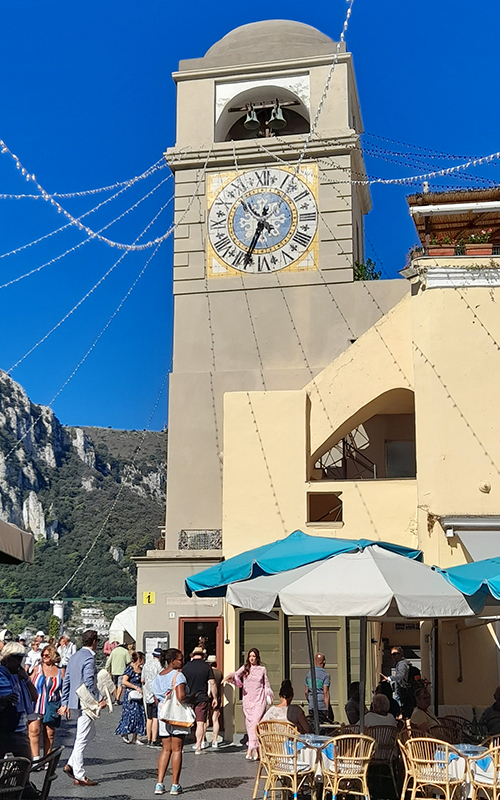
After a little under a week in the Amalfi Coast, we concluded our Italy trip. We chose this location last as it was a more relaxed way to spend the last few days, compared to busy and compact Rome. We also spent the most time here of the four locations (Venice, San Marino, Rome and Amalfi) because there’s so much to do here, and I really recommend taking the right amount of time to do everything you want.
This trip allowed us to explore the architectural wonders of the mighty Venice, the striking beauty and fascinating history of the oft-forgotten tiny San Marino, the might of Roman life through the centuries in the eternal city, and the stunning coastal beauty of the Mediterranean in the Amalfi Coast. We chose these particular locations to try and get as diverse a view as possible on Italian culture, history and beauty in the time and budget that we had, and I think it gave a brilliant insight into Italy and San Marino, and would highly recommend giving it a go. Although sometimes things don’t run smoothly, I’ve tried to outline various tips and safety considerations to help make your trip as fun and safe as possible. I also don’t pretend that this is an exhaustive list of everything Italy has to offer; it has so much to offer that we couldn’t do on this trip, and the places we did visit have so much more to offer than we had time to experience; but that just means more ideas for future travel when we come back to this amazing country. And it means you can have a better understanding of what’s available at these places, what you’d like to do and most importantly- when you’re going to go!
Written by Jeremy Hodgson


